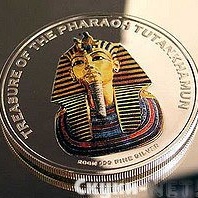
Cleaning a coin is the removal of dust, earth and metal oxides from its surface.
The easiest way to remove dust and dirt from a coin. To do this, it is enough to rinse it in running warm water with a brush or an ordinary toothbrush. This method is suitable for any coins from various alloys. But it is much more difficult to deal with oxides, since in this case the composition of the coin plays the main role.
Consider the basic methods for cleaning coins from different alloys.
Gold coins can simply be washed in water because gold does not oxidize.
In the case of silver coins, the sample of silver from which they are made should be clarified.
Coins from silver no less than 625 samples can be cleaned with a 10% solution of ammonia. You can buy it at any pharmacy quite inexpensively.
But for silver coins from base metal, you should use the most commonplace lemon juice. In both cases, the coins are completely immersed in the cleaning solution. They should not be in contact with air, since as a result an unremovable oxide layer is capable of forming.
Coins in the solution must be periodically turned over so that each surface area is in contact with the reagent. They are recovered after the oxides have been completely removed.
After that, the coins are washed in running warm water and dried.
An affordable and easy way to clean silver coins is to wipe them with ordinary baking soda. Soda is slightly moistened, after which the coin is wiped until the oxides are removed.
The most affordable (albeit long-lasting) way to clean any copper coins is by immersing them in a soap solution.
The main advantage of this method is absolute safety for a coin alloy. Periodically, coins are removed from the solution, washed and cleaned with a soft brush. This method can last for several months.
In addition, copper coins can be cleaned using table vinegar with an acid content of 5-10%.
If the metal of the coin is slightly oxidized, it is enough to hold it in vinegar for several minutes, and with significant damage, cleaning can take up to several hours.
Coins are turned over in the same way as in the case of silver.
After cleaning, the coins are washed and dried.
It is necessary to distinguish the origin of copper oxides. There are green oxides that must be removed necessarily, and the so-called patina.
Patina occurs when the coin is in the air or in the ground for a long time and as if preserves the coin. In addition, the patina is a sign of authenticity, so you should not remove it.
Coins made of zinc and iron alloys require a more delicate cleaning method. To do this, use weak hydrochloric acid, followed by the use of a brass brush.
It is not recommended to use strong acids, emery, hard metal brushes or the method of temperature difference when cleaning coins - all these measures lead to damage to the coins.
